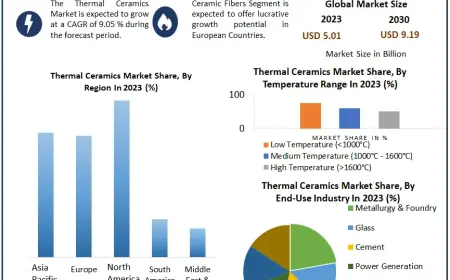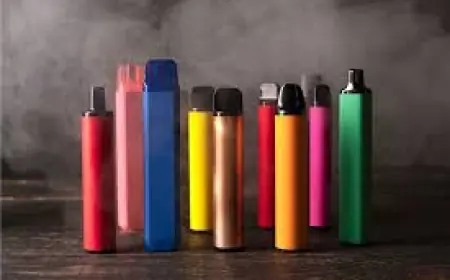Understanding the Benefits: Exploring PP Spunbond Nonwoven Fabric
PP spunbond nonwoven fabric, a type of nonwoven material, is increasingly being used in various applications. These fabrics are produced through a process in which polypropylene fibers are extruded onto a wire mesh belt and spun into a web, which is then bonded together using heat or chemicals. This Pulkit Plastic Products discusses the benefits, manufacturing process, and applications of PP spunbond nonwoven fabric. The process involves several stages. This material is becoming increasingly popular worldwide.
Material Properties: A Key to Durability and Performance
PP spunbond nonwoven fabric offers a range of material properties that make it suitable for various applications. The fabric has excellent tensile strength, resistance to tearing, and dimensional stability. It also provides excellent filtration capabilities, is lightweight, and has a relatively low moisture regain. The fabric's high density and low porosity make it an ideal choice for applications that require a high level of filtration. The properties are advantageous in various applications.
Manufacturing Process: From Concept to Reality
The manufacturing process of Non woven cloth manufacturing is complex and involves several stages. The first stage involves the production of polypropylene (PP) pellets, which are then converted into fibers. This is followed by the extrusion of fibers onto a wire mesh belt, where they are spun into a web. The web is then bonded together using heat or chemicals to create a strong and durable nonwoven fabric. The entire process is carefully monitored to ensure the quality of the final product. The process involves several stages of manufacturing.
Applications: Broadening the Scope
PP spunbond nonwoven fabric has a wide range of applications. In the medical field, it is used as a surgical gown, facemask, and wound dressing due to its excellent barrier properties and ease of use. In the construction industry, it is used as a roofing material, wall insulation, and floor cover due to its excellent insulation and water resistance properties. In the automotive industry, it is used as a sound-absorbing material, interior trim, and airbag fabric due to its lightweight and high-strength properties. Other applications include personal care, furniture, and industrial uses.
Benefits: Enhancing Performance and Sustainability
PP spunbond nonwoven fabric offers several benefits that make it a popular choice for various applications. One of the significant advantages is its eco-friendliness. The fabric is made from 100% polypropylene and is biodegradable, making it an excellent alternative to traditional nonwoven fabrics. It is also recyclable, reducing waste and minimizing environmental impact. Additionally, the fabric is easy to clean and maintain, making it an ideal choice for applications that require frequent washing. The benefits are numerous, and this is the reason they are becoming popular worldwide.
Nonwoven Cloth Manufacturing: Understanding the Process
Nonwoven cloth manufacturing, including the production of Non woven fabric spunbond, involves the creation of a web of fibers that are then bonded together using heat, chemicals, or pressure. The fibers can be made from a variety of materials, including polypropylene (PP), polyester (PES), and polyethylene (PE). The nonwoven fabric can be produced using various techniques, including air-jet weaving, water-jet weaving, and carded web. The manufacturing process is a complex operation.
Sustainability: A Key Consideration for the Future
Sustainability is becoming a crucial consideration in the production and use of PP spunbond nonwoven fabric. The fabric is made from 100% polypropylene, which is a biodegradable material. Additionally, the fabric is recyclable, reducing waste and minimizing environmental impact. The production process is also being optimized to minimize energy consumption and reduce carbon emissions. Companies involved in the non woven cloth manufacturing process are being incentivized by customers to adopt sustainable practices, and this is driving the innovation process.
Conclusion
The Manufacturing of non woven fabric is a versatile material with a wide range of applications. From its manufacturing process to its benefits and applications, this article has highlighted the key features of this nonwoven material. The manufacturing of non woven fabric like PP spunbond nonwoven fabric is a significant industry, and with increasing demand for sustainable materials. Companies like those that non woven fabric spunbond are becoming popular worldwide.
Frequently Asked Questions
-
What are the differences between PP, PES, and PE nonwovens?
PP, PES, and PE nonwovens differ in their raw materials and properties. PP is biodegradable, while PES is synthetic and PE is also synthetic but has different mechanical properties. Each type of nonwoven has its unique properties, and the choice of material depends on the specific requirements of the application.
-
Can PP spunbond nonwovens be sterilized?
PP spunbond nonwovens can be sterilized using various methods, including autoclaving, gamma radiation, and ethylene oxide sterilization. They are often sterilizable by these methods. However, it is essential to follow the supplier's guidelines for sterilization.
-
Are PP spunbond nonwovens suitable for medical applications?
PP spunbond nonwovens are widely used in medical applications due to their excellent barrier properties and ease of use. They are used in various medical applications, including surgical gowns, facemasks, and wound dressings. Their unique properties make them suitable for these applications.
-
Can PP spunbond nonwovens be used in the construction industry?
Yes, PP spunbond nonwovens can be used in the construction industry. They are used in roofing, wall insulation, and floor cover due to their excellent insulation and water resistance properties. Additionally, they are lightweight, easy to install, and cost-effective. The use of these materials in the construction industry is increasing.
What's Your Reaction?
 Like
0
Like
0
 Dislike
0
Dislike
0
 Love
0
Love
0
 Funny
0
Funny
0
 Angry
0
Angry
0
 Sad
0
Sad
0
 Wow
0
Wow
0















































